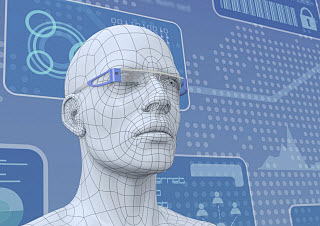The brand has decided not to use the over-the lens prism that was selected for Google Glass.
The latest brand to have their eye – so to speak – on the smart glasses market appears to be Toshiba, which has just finished revealing their prototype in Japan at the Ceatec trade show.
While these wearables may not be ready to bump Google Glass out of the running, price may be in their favor.
So far, it looks as though the smart glasses that could be offered by Toshiba would be a bit more affordable than Google Glass, which comes with a hefty price tag, at the moment. They are currently calling this wearable technology device Toshiba Glass. While they do include a built-in projector, they are unlike the current front runner in this category in that the image that they display is simply reflected off the inside of the lens in order to provide the wearer with a kind of augmented reality display experience.
This makes the idea similar to Google’s smart glasses, but at the same time, they are rather different.
 The Toshiba wearables feature a lightweight, small projector that is clipped onto one of the arms of the eyewear, close to the lens. It is that projector that reflects the image off the lens for the viewer to see in augmented reality. Google’s option also uses a projector, but its design is different in that it uses a prism over the lens in order to reflect the projected image to be seen by the wearer’s eye.
The Toshiba wearables feature a lightweight, small projector that is clipped onto one of the arms of the eyewear, close to the lens. It is that projector that reflects the image off the lens for the viewer to see in augmented reality. Google’s option also uses a projector, but its design is different in that it uses a prism over the lens in order to reflect the projected image to be seen by the wearer’s eye.
The product from Toshiba skips the use of the prism and has constructed the lens, itself, to be made up of a series of slim vertical prisms that are essentially invisible while looking directly through the lens as you would as you went about your daily routines. However, it allows an image to be projected upon them from an angle so that the wearer will be able to see it.
The specs from the company state that the device, as a whole, weighs about the same as Google Glass, at 42 grams. That said, they aren’t quite up to that level, particularly in that they are not wireless, as a battery in the projector would make the weight too high.
Patent pictures hint at a new design concept for the wearable tech.
Although not everyone is on board with Google Glass, one aspect regarding this wearable device on which most people agree is the fact that it lacks aesthetic appeal and does very little for a person’s looks, but this minor issue may be rectified down the road based on the latest speculations regarding a recent acquired patent.
The new design appears to be sleeker and thicker compared to the current eyewear.
Mitchell Heinrich, Google design and prototyping engineer involved with Project Glass, was granted US patent D710,928 S on August 12. The patent shows a Google Glass design that looks far more like thick framed normal eyeglasses compared to the relatively bulky projector that sits on the side of the current device.
Heinrich’s involvement in the project is described on his website as “Early stage mechanical architecture layout. Lead the consumer packaging development for the explorer release. Developed human factors numerical and physical models to fit Glass on as many people as possible. Co-developed the bone conduction audio system including component design and testing. Broad range of low and high fidelity prototype development.”
 The patent application reveals relatively normal looking spectacles with a thick frame that features a display apparatus, which is tucked on the inside and is attached to the right arm of the glasses near the hinge. This would not only hide the projector, but make the wearable display device potentially more comfortable for the user, as they could receive information projected from the apparatus on the lenses instead of it floating in front of their eyes. This could also mean better image quality. On the other hand, this new design could end up being more obstructive to the wearer’s vision.
The patent application reveals relatively normal looking spectacles with a thick frame that features a display apparatus, which is tucked on the inside and is attached to the right arm of the glasses near the hinge. This would not only hide the projector, but make the wearable display device potentially more comfortable for the user, as they could receive information projected from the apparatus on the lenses instead of it floating in front of their eyes. This could also mean better image quality. On the other hand, this new design could end up being more obstructive to the wearer’s vision.
The new design may make people even more suspicious of Google Glass users.
Despite being more appealing to look at, this new design could raise more concerns among non-Glass users who may argue that it will make it easier for wearers to film others without these people being aware that they are being captured on film or that Glass users may find it easier to engage in other illicit activity. For instance, the smartglasses have already been banned at certain movie theaters in the US to prevent the illegal filming of movies.
Nevertheless, at the moment, the patent doesn’t reveal enough about the next-gen Google Glass for anything official to be determined. However, what has been seen certainly does appear to be a notable evolution in the product.
 The Toshiba wearables feature a lightweight, small projector that is clipped onto one of the arms of the eyewear, close to the lens. It is that projector that reflects the image off the lens for the viewer to see in augmented reality. Google’s option also uses a projector, but its design is different in that it uses a prism over the lens in order to reflect the projected image to be seen by the wearer’s eye.
The Toshiba wearables feature a lightweight, small projector that is clipped onto one of the arms of the eyewear, close to the lens. It is that projector that reflects the image off the lens for the viewer to see in augmented reality. Google’s option also uses a projector, but its design is different in that it uses a prism over the lens in order to reflect the projected image to be seen by the wearer’s eye.
 The patent application reveals relatively normal looking spectacles with a thick frame that features a display apparatus, which is tucked on the inside and is attached to the right arm of the glasses near the hinge. This would not only hide the projector, but make the
The patent application reveals relatively normal looking spectacles with a thick frame that features a display apparatus, which is tucked on the inside and is attached to the right arm of the glasses near the hinge. This would not only hide the projector, but make the 